We’re proud to publish Jim Gain’s series, “Learn 100 Common Valley Birds.” An educator, naturalist and superb photographer, there is more of Jim’s superb work at Reflections of the Natural World. It’s always worth a visit to see Jim’s most recent posts. Here, we have a double feature: Numbers 26 and 27 with species 42 through 46 of 100 total common Valley birds. ed.
Common Valley Phalaropes: #26 in the Learn 100 Common Valley Birds series. (Species 42, & 43/100)
Red-necked Phalarope #42
The Red-necked Phalarope (Phalaropus lobatus) is a small migratory bird that can be observed in the Central Valley of California during the spring and fall migration seasons.
Like other phalaropes, it is a polyandrous species in which sex roles are reversed; breeding females are distinguishable by brighter plumage than males and by slightly larger body size. This bird measures around 7 inches in length and has a distinctive appearance, with a dark back, white belly, and reddish neck and throat. During the breeding season, the female takes on a brighter plumage than the male, with a more intense red neck and a darker back.
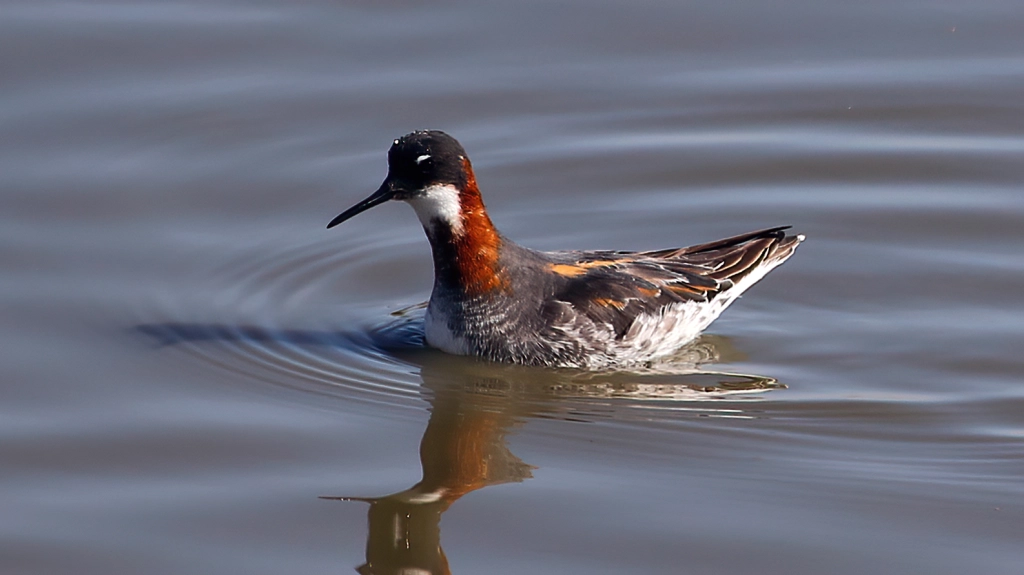
The Red-necked Phalarope is a highly specialized bird that spends most of its life at sea. It is known for its unique feeding behavior, where it spins in circles on the water’s surface to create a whirlpool, which draws in small prey, such as crustaceans and plankton. During migration, these birds can be found in shallow wetlands, flooded fields, and other areas with shallow water, where they forage for food.

Basic (nonbreeding) plumage of both sexes includes a white head with a conspicuous black line through and behind the eye, a dark patch on the back of the crown or nape, white underparts that occasionally have gray smudges on the sides of the breast and flanks, and gray upperparts with white fringes along the scapular and mantle margins.

Red-necked Phalaropes breed in the Arctic tundra and migrate long distances to their wintering grounds in the Pacific Ocean. The Central Valley of California serves as an important stopover site for these birds during their migration, providing a critical source of food and habitat as they travel between their breeding and wintering grounds.
Wilson’s Phalarope #43
The Wilson’s Phalarope (Phalaropus tricolor) is a unique and beautiful shorebird species that can be found in the Central Valley of California during its annual migration. Adults have a distinctive plumage with a grayish-brown back and wings, white underparts, and a reddish neck and breast. However, during breeding season, the females become more colorful, with a bright rusty-red back and wings.
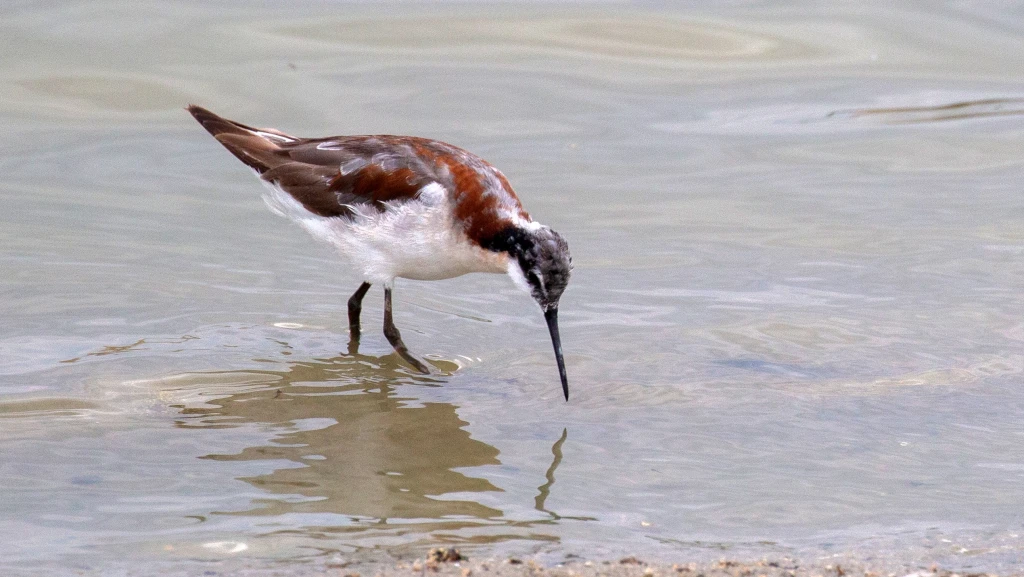
Wilson’s Phalaropes are well-adapted to their wetland habitats, where they feed on small aquatic invertebrates by spinning in circles on the water’s surface, creating a vortex that draws prey towards their bills. They are also notable for their breeding behavior, where females take on a more dominant role, courting and defending multiple males while the males incubate the eggs and care for the chicks.
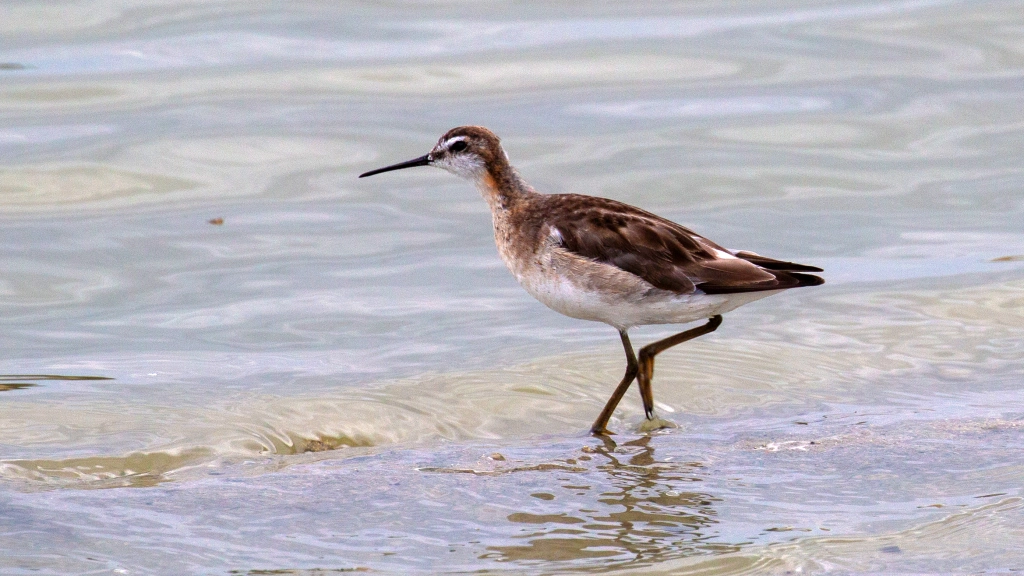
While the Central Valley of California provides important stopover habitat for Wilson’s Phalaropes during migration, this species faces threats from habitat loss and degradation due to agriculture, drought, and climate change. Conservation efforts such as wetland restoration and protection are crucial to ensuring the survival of this unique and fascinating bird.
Common Valley Wrens
Post #27 in the Learn 100 Common Valley Birds (Species 44, 45, & 46/100 + 3 BONUS birds)
House Wren #44
The House Wren (Troglodytes aedon) is a small, brown bird that is commonly found in the Central Valley of California. It has a round body with barred wings and short tail. The male and female birds look very similar, with the males being slightly larger and having a louder and more complex song.
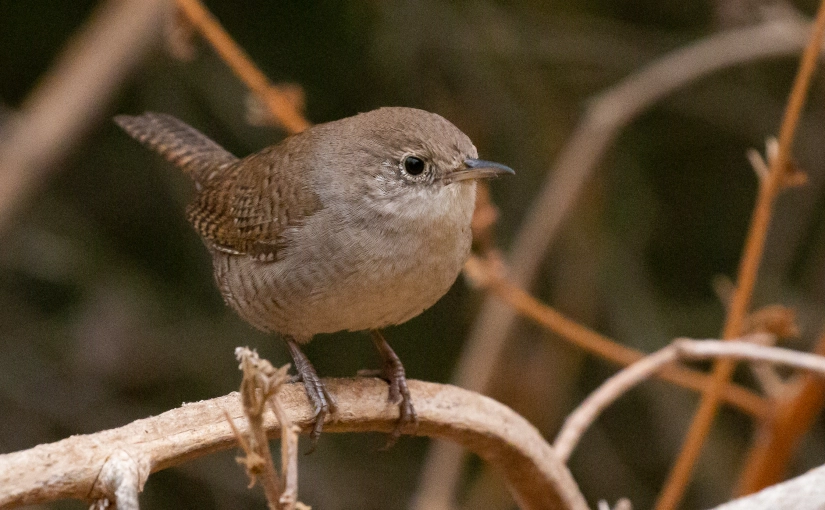
House Wrens are highly adaptable birds that are found in a wide range of habitats, from urban parks and gardens to forests and grasslands. They are known for their energetic behavior, frequently flicking their tails and wings as they hop and flit through vegetation in search of insects and spiders to eat.
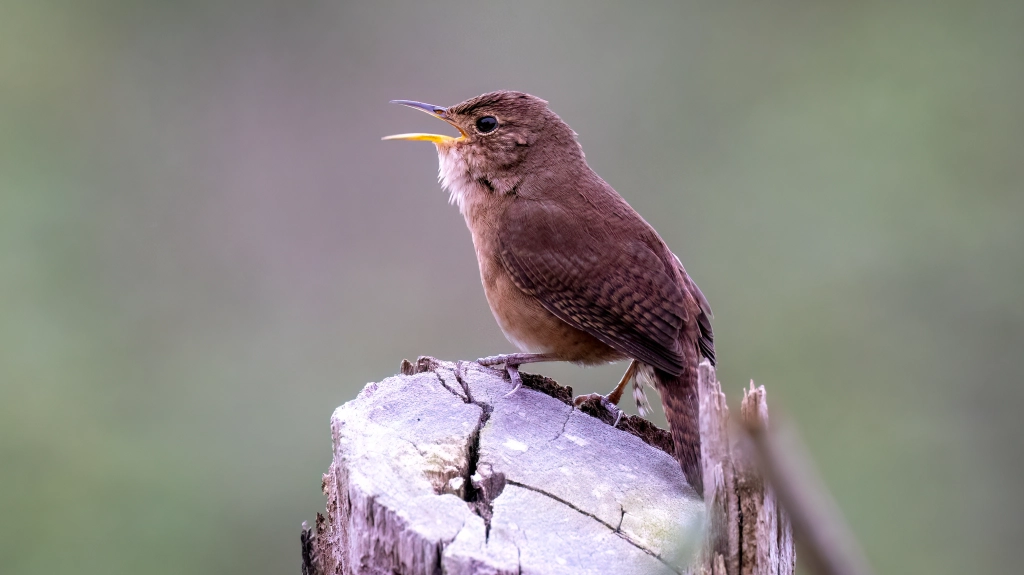
In the spring and summer, they build nests in cavities, such as tree hollows, birdhouses, or even old shoes left lying around. The female lays 4-8 eggs, and both parents help feed and care for the young. House Wrens are also known for their aggressive territorial behavior, often attacking other birds that come too close to their nest site.
Marsh Wren #45
The Marsh Wren (Cistothorus palustris) is a small, secretive bird that can be found in marshes, wetlands, and other similar habitats throughout North America, including the Central Valley of California. Adult Marsh Wrens are about 4.5 inches in length and weigh around 0.3 ounces. They have brown and black streaked upperparts, a white throat, and a distinctive black and white striped crown. Their wings are short and rounded, and their tail is relatively long and often held erect.
Marsh Wrens are highly territorial birds, with males singing loudly and continuously to defend their nesting territories during the breeding season. They build intricate, globular nests made of cattails, sedges, and other marsh vegetation. The female lays 4-7 eggs, which she incubates for about two weeks. Both parents feed and care for the chicks, which fledge after about two weeks. Marsh Wrens are primarily insectivorous and feed on a variety of small invertebrates, including spiders, caterpillars, and beetles.
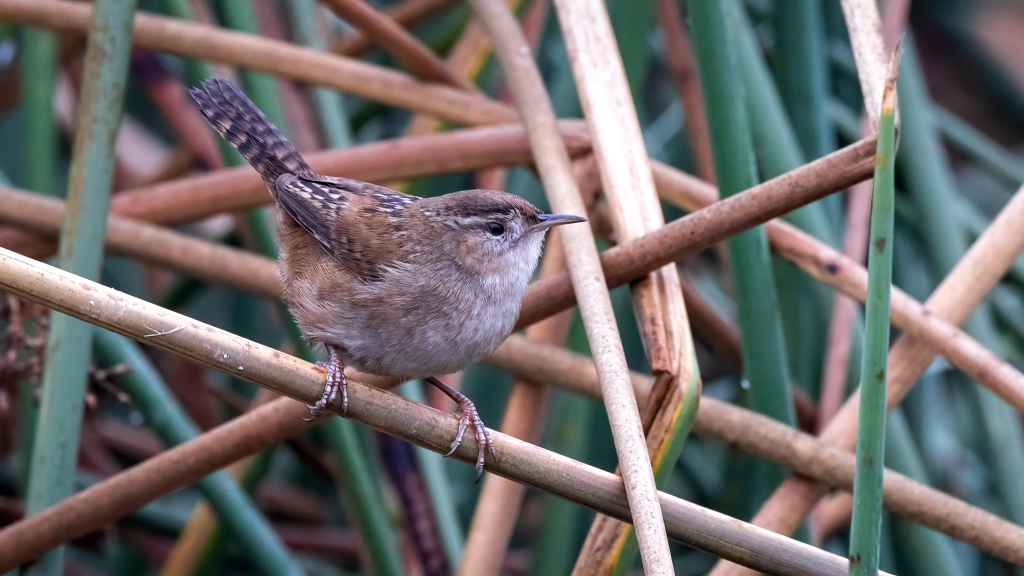
In the Central Valley of California, Marsh Wrens are commonly found in freshwater marshes and riparian habitats along rivers and streams. They are most easily spotted by their loud and incessant singing and their distinctive nest structures. Marsh Wrens are an important indicator species of the health of wetland habitats, and their presence or absence can be used to monitor the success of wetland restoration projects.
Bewick’s Wren #46
The Bewick’s Wren (Thryomanes bewickii) is a small, brown bird that is common in the Central Valley of California. They have a distinctive appearance, with a long, thin bill, a brownish-gray back, and a cream-colored belly. They also have a distinctive white eyebrow stripe above their eyes and a long tail that they often hold upright.
Bewick’s Wrens are a common sight in gardens, parks, and other urban areas throughout the Central Valley. They are also found in oak woodlands, riparian areas, and other brushy habitats. They are active and vocal birds, hopping and flitting around in search of insects, spiders, and other small invertebrates.
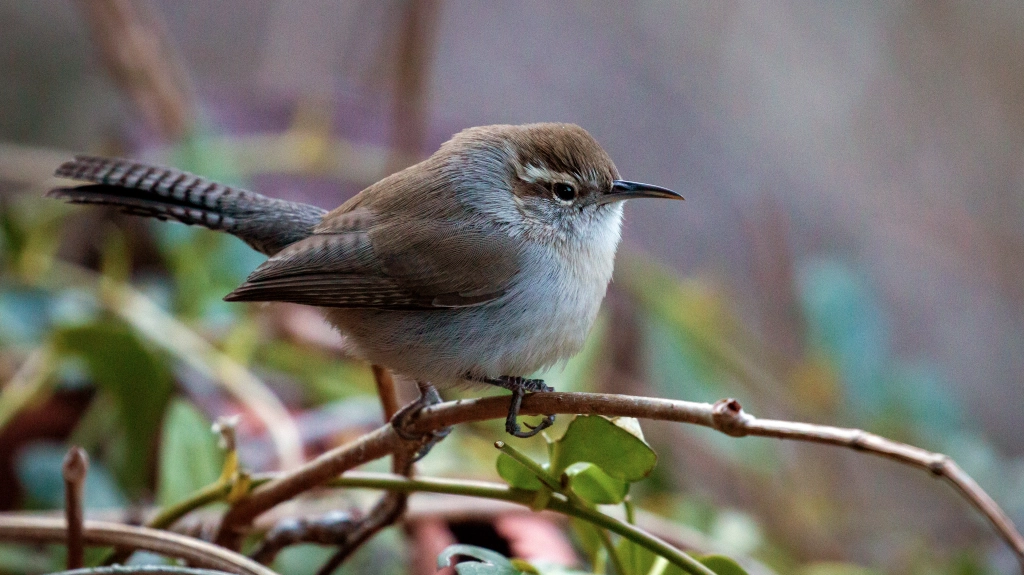
Breeding pairs of Bewick’s Wrens are monogamous and typically raise two broods per year. They build nests in cavities, such as tree holes or birdhouses, and the female lays between 4-7 eggs per clutch. Both parents share the duties of incubating the eggs and feeding the chicks. The population of Bewick’s Wrens in the Central Valley is considered stable, but they face threats from habitat loss and fragmentation, as well as predation by domestic cats and other predators.
BONUS BIRD – Rock Wren (Excluded from 100 Common Birds due to its limited habitat preferences)
The Rock Wren (Salpinctes obsoletus) is a small songbird that is commonly found in rocky habitats throughout western North America, including the Central Valley of California. This species is about 4.5-5 inches in length and has a distinctive long, slightly-curved bill that is well-suited for foraging in rock crevices and cracks. They are brownish-gray overall, with dark barring on their wings and tail. They have a peculiar habit of doing rapid bobbing as the stand and walk.
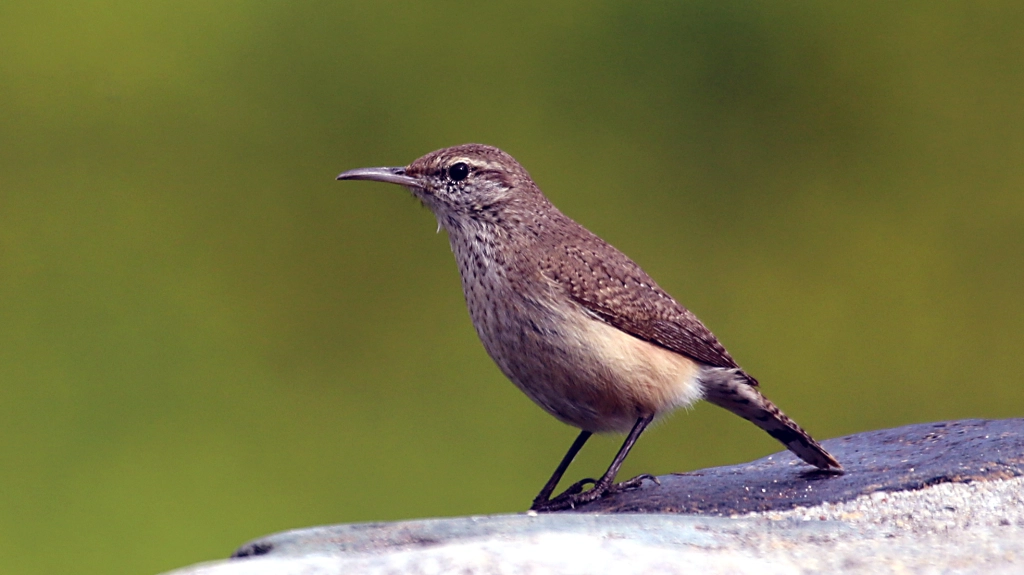
Rock Wrens are adapted to life in rocky habitats, where they build their nests in crevices or under rocks. They are active year-round in California, and are known for their distinctive song, which is a series of high-pitched, tinkling notes. They are primarily insectivores, feeding on a variety of insects, spiders, and other small invertebrates. Although they are not considered threatened or endangered, habitat loss and disturbance can have a negative impact on their populations.
BONUS BIRD – Canyon Wren (Excluded from 100 Common Birds due to its limited habitat preferences)
The Canyon Wren (Catherpes mexicanus) is a small, brownish wren that is commonly found in the rocky canyons and cliffs of the western United States, including the Central Valley of California. It is characterized by its distinctive, loud, and musical song, which it uses to communicate with its mate and defend its territory.
In terms of appearance, the Canyon Wren has a striking and distinctive plumage, with a reddish-brown back, a white throat, and a long, curved bill. Its tail is relatively short, and it has white spots on its wings, which are visible when it is in flight. The bird is also known for its agile and acrobatic movements, which it uses to navigate the rocky terrain of its habitat.
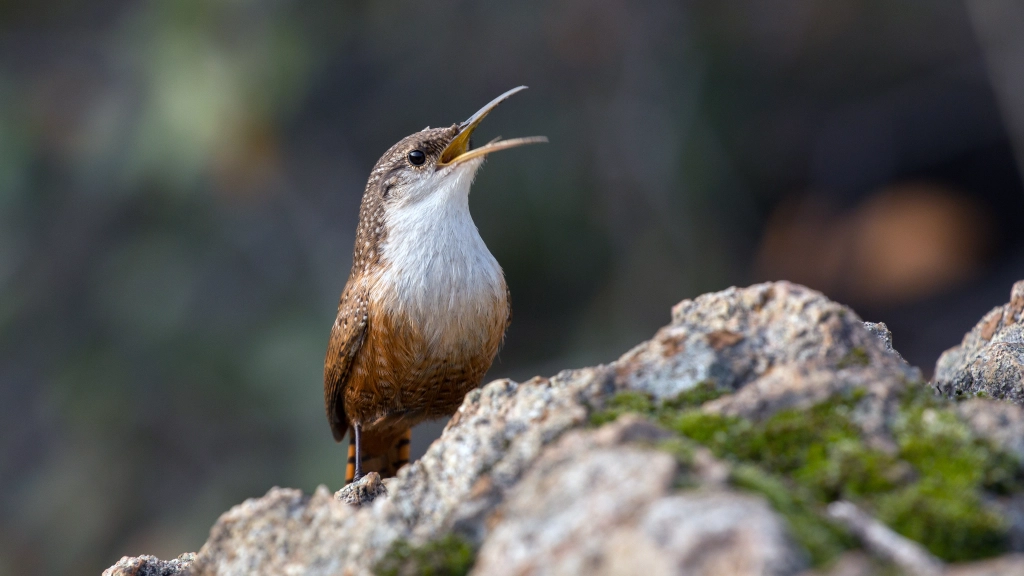
The natural history of the Canyon Wren is closely tied to its rocky canyon habitat. It is a highly territorial bird that defends its territory vigorously against intruders, using its loud song to warn off other birds and animals. It feeds primarily on insects, which it captures by hopping and crawling along the rocky surfaces of its habitat. During the breeding season, the male Canyon Wren will build several nests, which the female will inspect before choosing one to use for laying her eggs. Overall, the Canyon Wren is an interesting and unique bird that is well adapted to the challenging environment of the Central Valley’s rocky canyons.
BONUS BIRD – Pacific Wren (Excluded from 100 Common Birds due to its rare presence in the Valley)
The Pacific Wren (Troglodytes pacificus) is a small, plump bird that can be found in the Central Valley of California. The bird is approximately 4.5 inches in length and has a warm, brownish-gray coloration with a darker brown head and back. Its tail is often cocked up and it has a short, stubby beak.
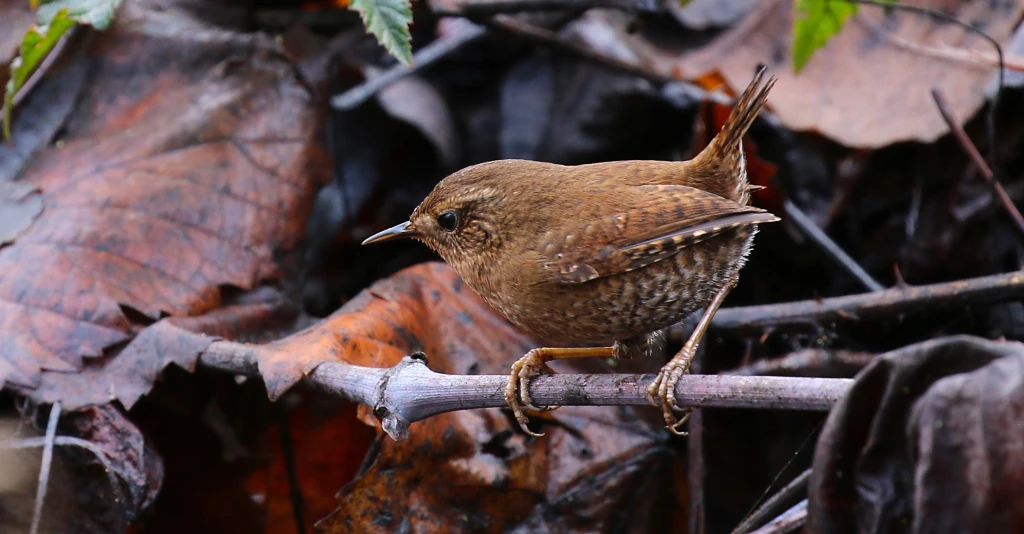
The Pacific Wren is typically found in dense, moist forests near water sources such as streams or wetlands. They are active birds that are constantly foraging for insects and spiders among the leaf litter and fallen logs. During the breeding season, males will build several nests to attract females and will sing loudly to defend their territory.
Although the Pacific Wren is a year-round resident of the Central Valley of California, its population has declined in recent years due to habitat loss and fragmentation. Conservation efforts are underway to protect remaining habitat and restore degraded areas to ensure the survival of this species.


My God, has so many plans for us to make us happy and not sad. As I watch His creation feathered and furred, frolic about with hardly a care in the world, I am gifted with glimpses of His sense of humor and heartfelt feeling towards us, His creation of many colors, languages, origins that He set about migrating across the lands and waters. We and His other creations are all marvelously made.
If only we could all agree to be peace makers and come together in unison and bask under His secure love for mankind and His earthly Kingdom. Lovers of one another and His majestic animal, mineral, and vegetation covered bounty.
Praise God, and give credit where credit is due. Thank you, Jim Gain for sharing your love. And, let us not go without honoring, Eric Caine for his gift of the Valley Citizen. Learning about all our feathered friends is a great respite in times of deep concern for those who continue to suffer without …
… [Trackback]
[…] Informations on that Topic: thevalleycitizen.com/double-feature-jim-gains-learn-100-common-valley-birds-26-and-27/ […]
… [Trackback]
[…] Find More Information here on that Topic: thevalleycitizen.com/double-feature-jim-gains-learn-100-common-valley-birds-26-and-27/ […]
… [Trackback]
[…] Here you can find 83681 more Information on that Topic: thevalleycitizen.com/double-feature-jim-gains-learn-100-common-valley-birds-26-and-27/ […]